How to Create mijin Catapult (v.2) Cloudformation on the Enterprise Preview version
This page walks you through how to launch mijin Catapult (v.2) Enterprise Preview version from cloudformation in the AWS Marketplace.
View Network

Step.1
First, you need to subscribe to use AMI in mijin Catapult (v.2) enterprise preview version. To do so, click the “Continue to Subscribe” button as the screenshot shows below.

Step.2
Accept Terms to use mijin Catapult (v.2) enterprise preview version AMI.

Step.3
Click the “View Template in CouldFormation Designer” in order to create a network with Cloudformation as shown in the figure below.
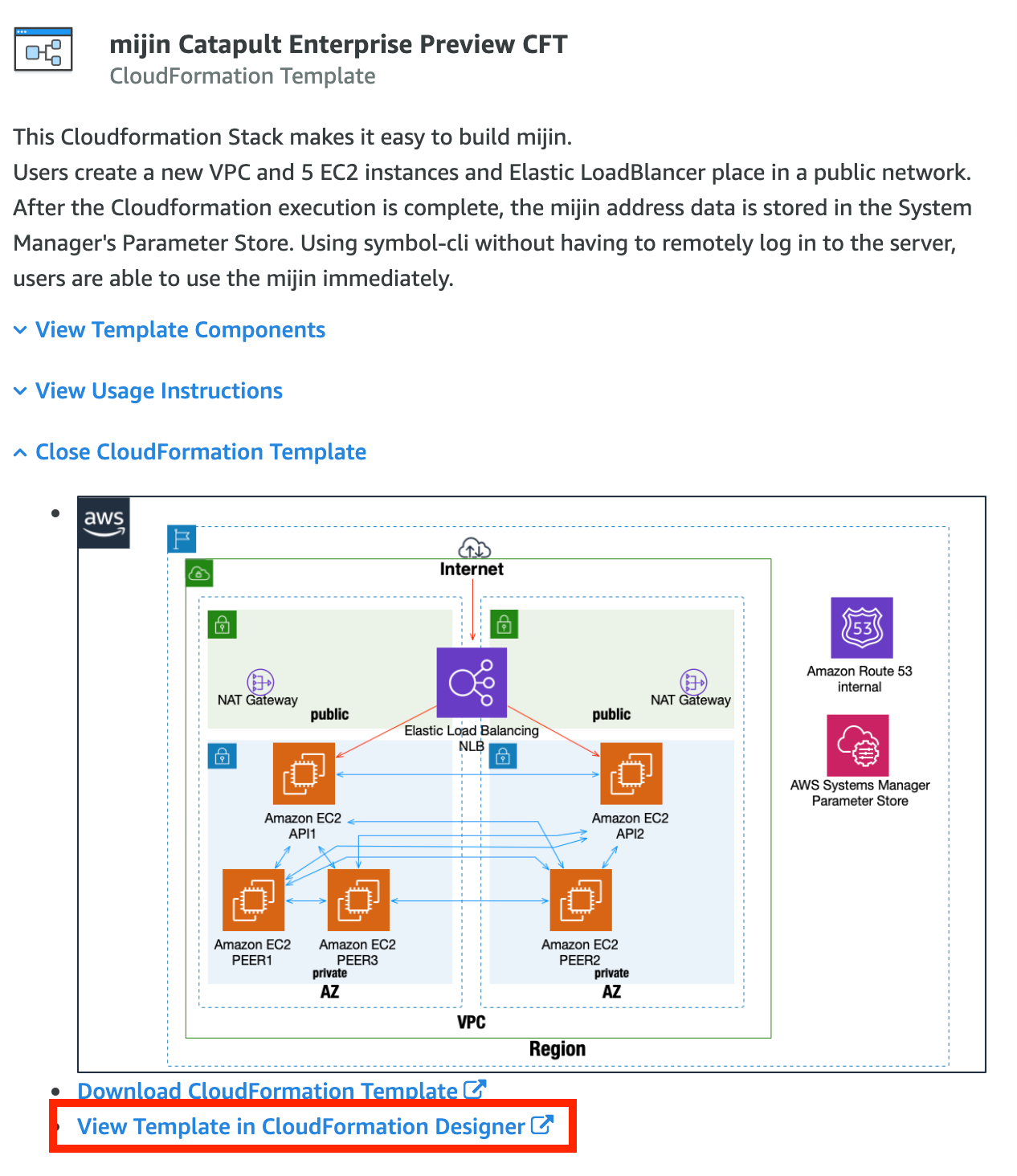
Step.4
You don’t need to edit here and click the cloud symbol “CreateStack”.
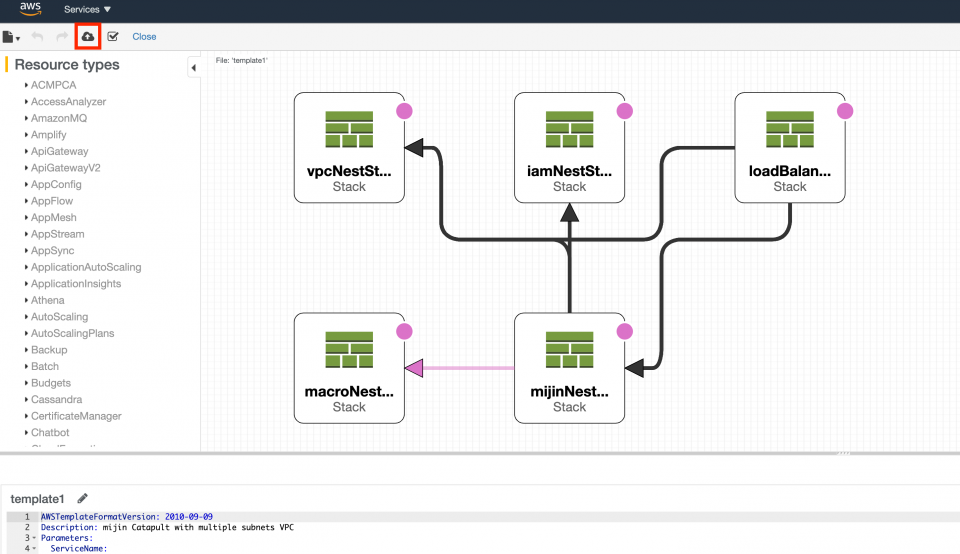
Step.5
You don’t need to edit here and click the “Next”.
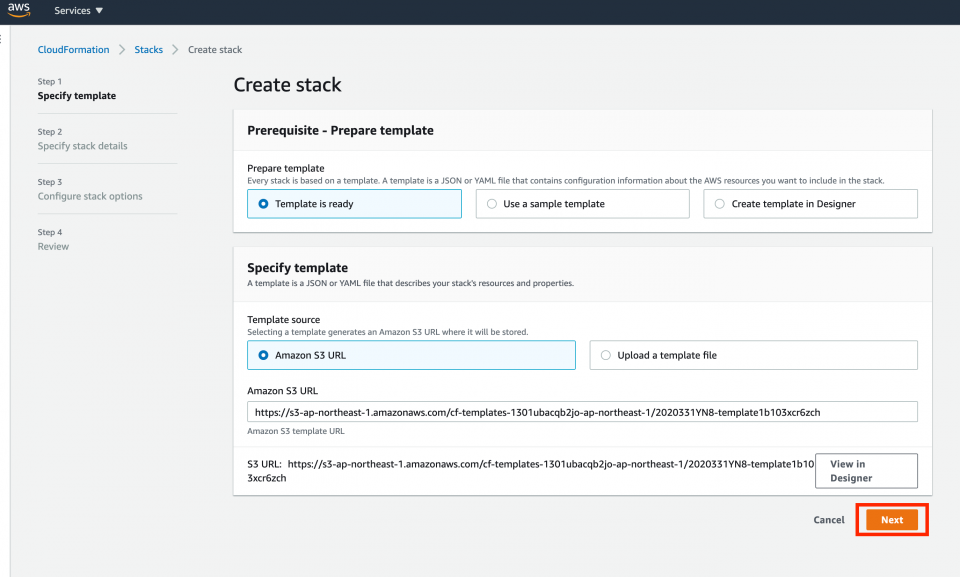
Step.6
Enter each parameters:
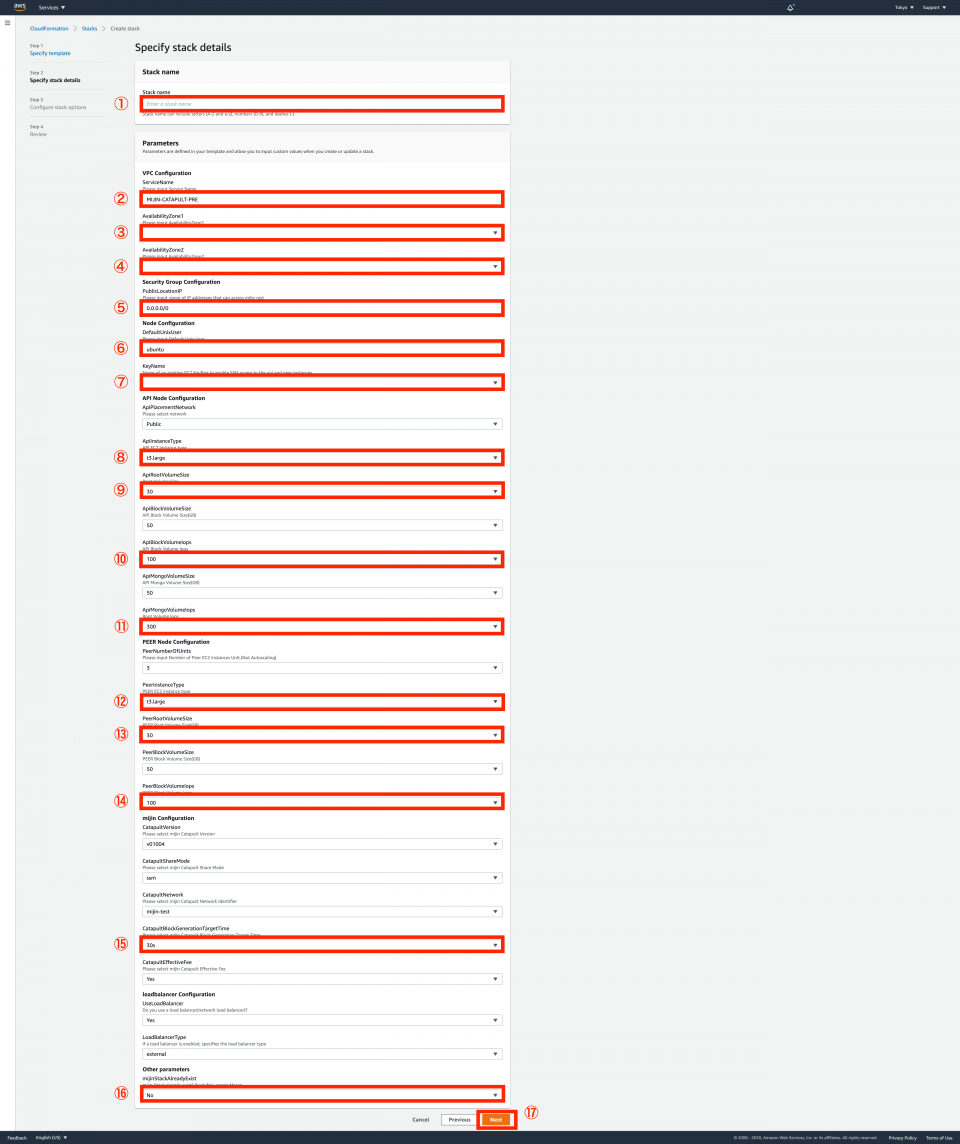
| No | Parameter | Description |
|---|---|---|
| ① | Stack Name | Name for this Stack |
| ② | Service Name | Name of the service created by this stack. This is used as the title for all resources. |
| ③ | Availability Zone1 | Availability Zone for the region you are using (This is for Multi-AZ architecture). |
| ④ | Availability Zone2 |
Availability Zone for the region you are using (This is for Multi-AZ architecture). This should not be the same as Availability Zone1. |
| ⑤ | Public Location IP | IP address that is allowed to connect to mijin Catapult's API. This IP addresses can be defined in a range (e.g. /24) |
| ⑥ | Default UnixUser | Standard Unix user for the EC2 instance you are creating. |
| ⑦ | KeyName | The SSH key for the remote connection of the EC2 instance that you want to create. If the key is not displayed, you must create a key beforehand. For details on how to create a key, see here. |
| - | ApiPlacementNetwork | Select the network in which you want to deploy the EC2 instances as API nodes. In this preview version, you can only select the Public network. |
| ⑧ | ApiInstanceType | Choose the specs for the EC2 instance of the API node. |
| ⑨ | ApiRootVolumeSizee | Select the disk size (GB) of the root partition of the API node. |
| - | ApiBlockVolumeSize | Select the disk size (GB) on which to place the mijin block data of the API node. This is a preview version, so the size is fixed. |
| ⑩ | ApiBlockVolumeIops | Choose the number of disk reads and writes per second for the disk on which to place the mijin block data of the API node. Note that because the disk is io1, the price increases with the speed of iops. |
| - | ApiMongoVolumeSize | Select the disk size (GB) on which to place the mijin mongo data for the API node. This is a preview version, so the size is fixed. |
| ⑪ | ApiMongoVolumeIops | Choose the number of disk reads and writes per second for the disk on which to place the mijin mongo data in the API node. Note that because the disk is io1, the price increases with the speed of iops. |
| - | PeerNumberOfUnits | Please specify the number of PEER nodes. In the preview version, the number is fixed. |
| ⑫ | PeerInstanceType | Select the specifications for the EC2 instance of a PEER node(For all PEER nodes). |
| ⑬ | PeerRootVolumeSize | Choose the disk size (in GB) for the root partition of the PEER node(For all PEER nodes). |
| - | PeerBlockVolumeSize | Choose the disk size (in GB) on which to place the mijin block data of the PEER node(For all PEER nodes). This is a preview version, so the size is fixed. |
| ⑭ | PeerBlockVolumeIops | Choose the number of disk reads and writes per second for the disk on which to place the PEER node's mijin block data (For all PEER nodes). Note that because the disk is io1, the price increases with the speed of iops. |
| - | CatapultVersion | Please select the mijin version. In the preview version, the mijin version is fixed. |
| - | CatapultShareMode | Select where you want to store the information required for block generation (such as addresses and the node's SSL public key). Currently, only the AWS SystemManager parameter store is available. |
| - | CatapultNetwork | Select the mijin network. In the preview version, this should be the test network |
| ⑮ | Catapult BlockGenerationTargetTime | Select the block generation time for mijin. In the preview version, you can choose only 30 seconds or 60 seconds. |
| - | CatapultEffectiveFee | Please select the transaction, with or without rental fees. In the preview version, it is fixed with a fee. |
| - | UseLoadBalancer | Choose to use load balancing with a load balancer(NLB) or not. In the preview version, this is fixed with the load balancer. |
| - | LoadBalancerType | Select whether you want the load balancer to be installed internally or externally. In the preview version, this is an external installation. |
| ⑯ | mijinStackAlreadyExist | Select if the mijin stack exists. If a mijin stack exists already, select "Yes" for the other mijin stack otherwise the creation of the stack will fail. |
After entering the parameters, click the "Next" button on 17.
Step.7
You don’t need to edit here and click the “Next”.
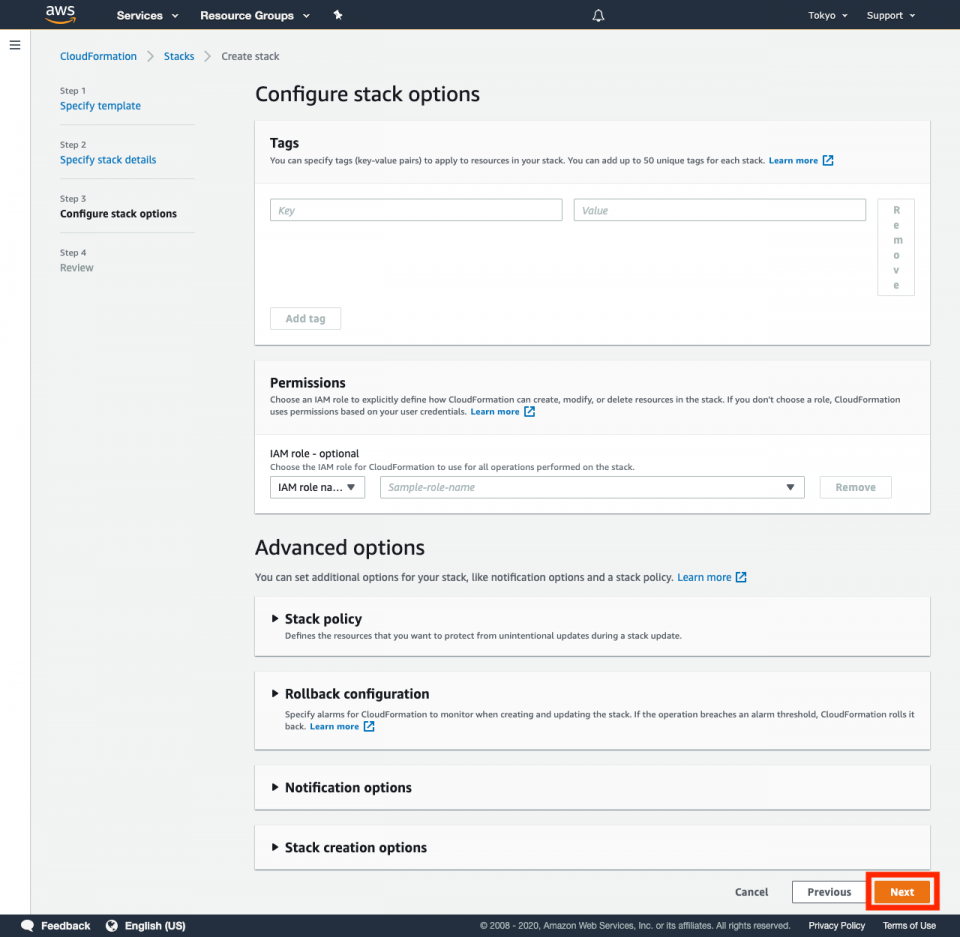
Step.8
Fill the two check items(①).
Then click the "Create Stack" (②). If there’s no issue, stack will start to be built.
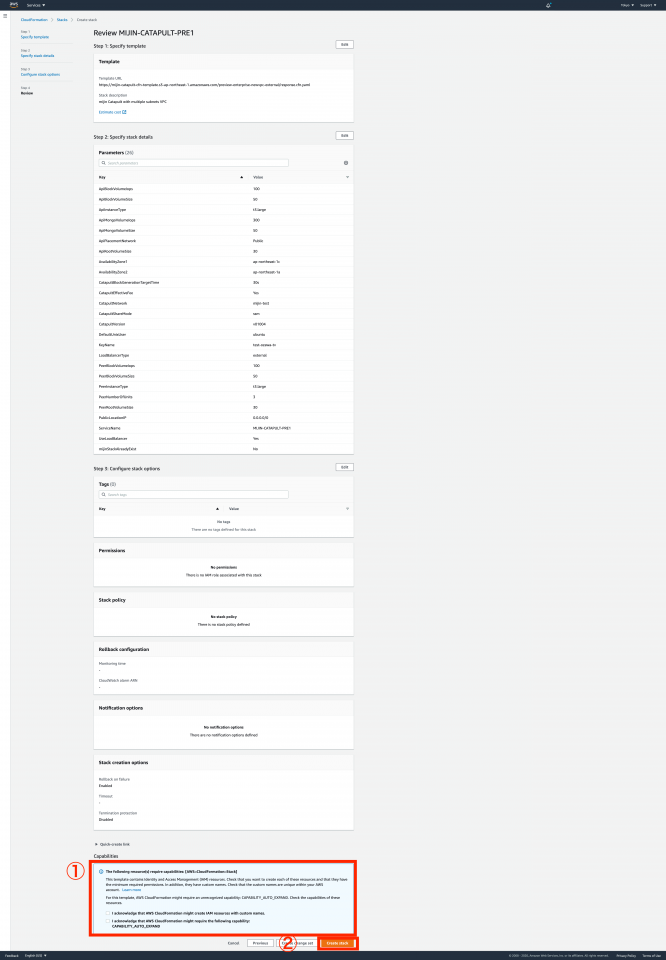
Step.9
Make sure that the Stack process has started and that you see "CREATE_IN_PROGRESS". This process should take about 20-30 minutes.
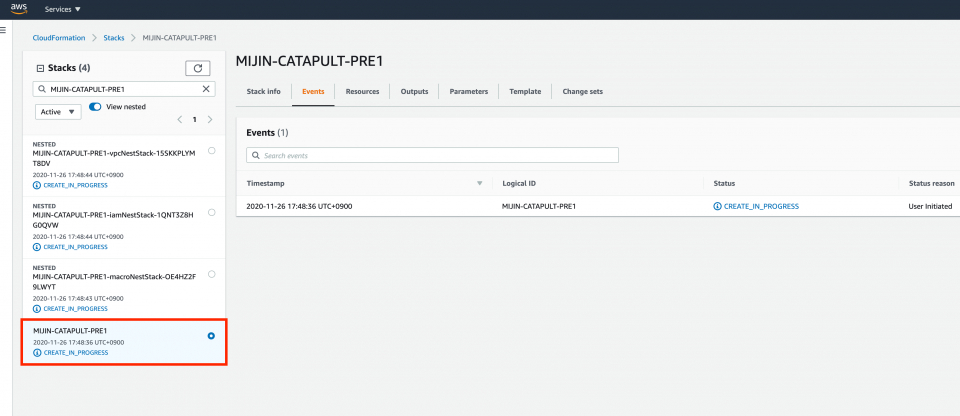
Step.10
When the process is completed, you will see "CREATE_COMPLATE" and the mijin has been created.
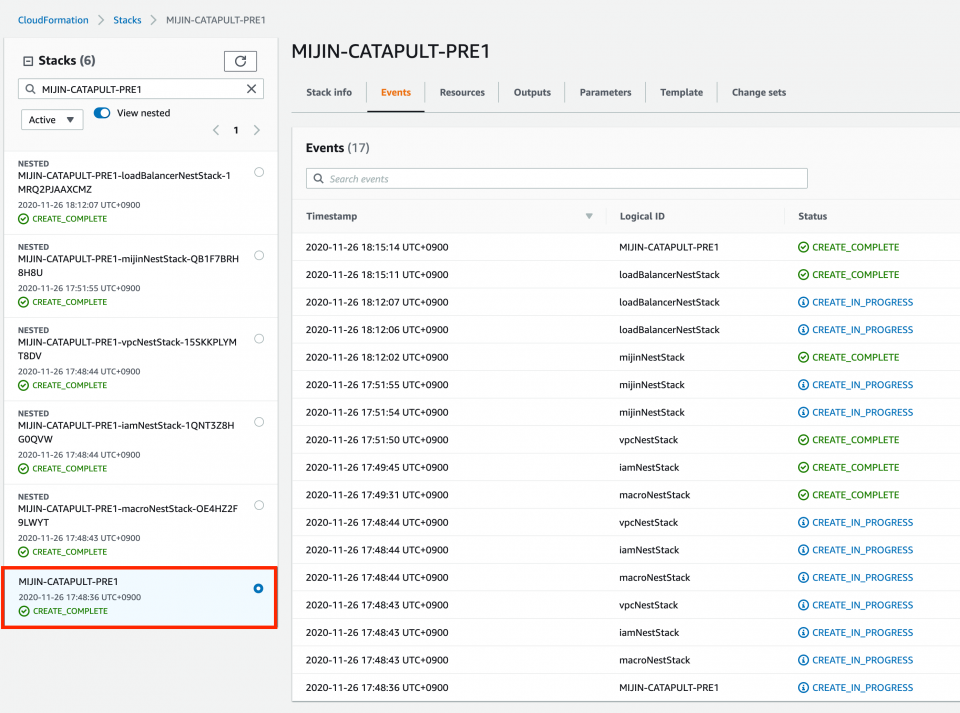
Step.11
If you click the "Outputs" on the created Stack, you can check the configuration information of the mijin.
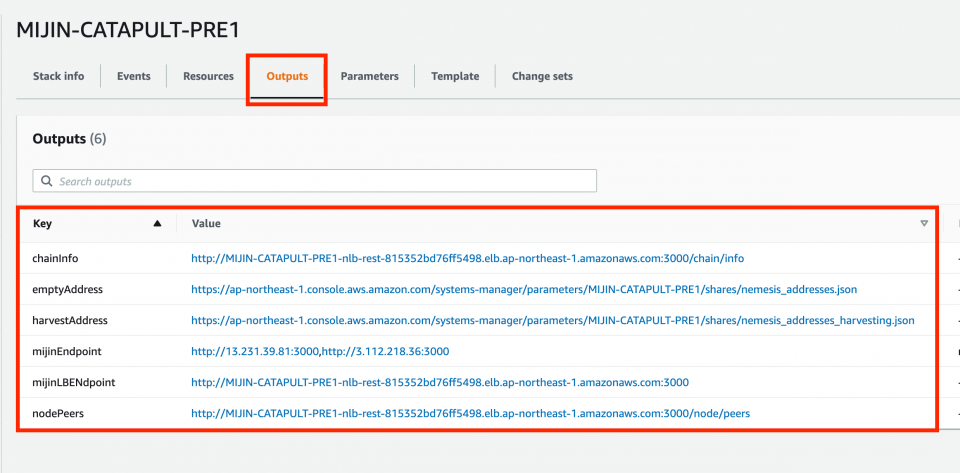
| Key | Description | View |
|---|---|---|
| mijinLBEndpoint | A mijin API endpoint through a load balancer, which load balances API nodes but is configured to maintain the session and is determined by the source IP. For more information about sticky sessions, please read here. | - |
| mijinEndpoint | This is an API endpoint for an EC2 instance of mijin, an API node. You can access the API directly instead of via the load balancer. | - |
| chainInfo |
You can check the current number of blocks in mijin. Please make sure that the number of blocks here is more than 2. |
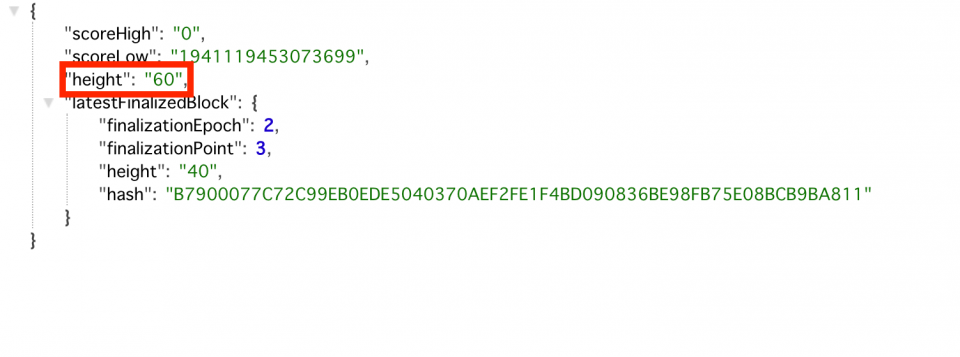
|
| harvestAddress | The URL is a link to the SystemManager service parameter store and is linked to the address where the base currency is distributed. |
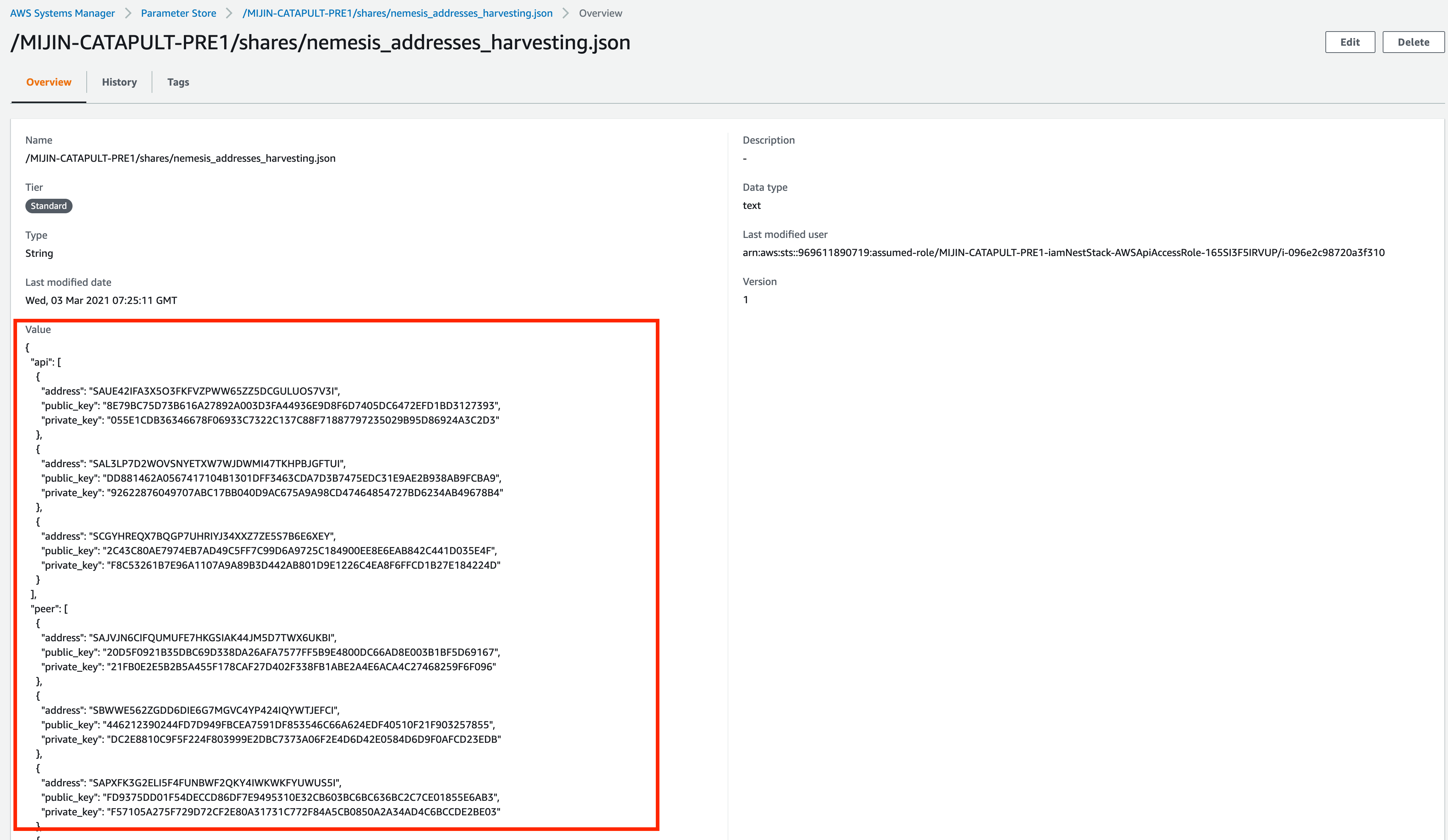
|
| emptyAddress | The URL is a link to the SystemManager service parameter store and generates an unused address. |
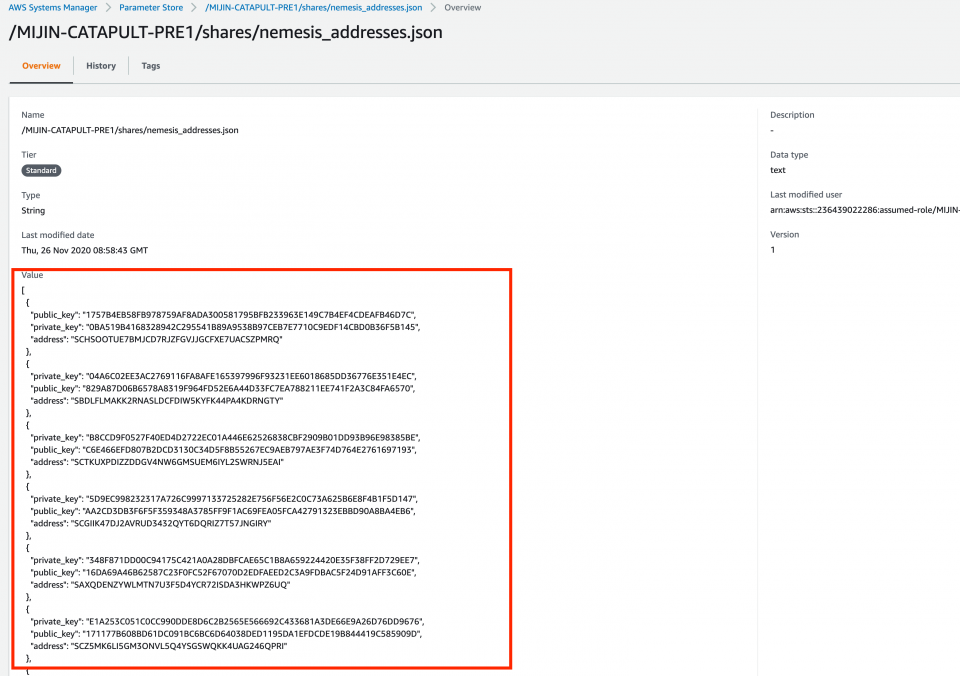
|
| nodePeers | You can check the connection status of a node from the API: If this shows one api and three peers, there’s no issue. |
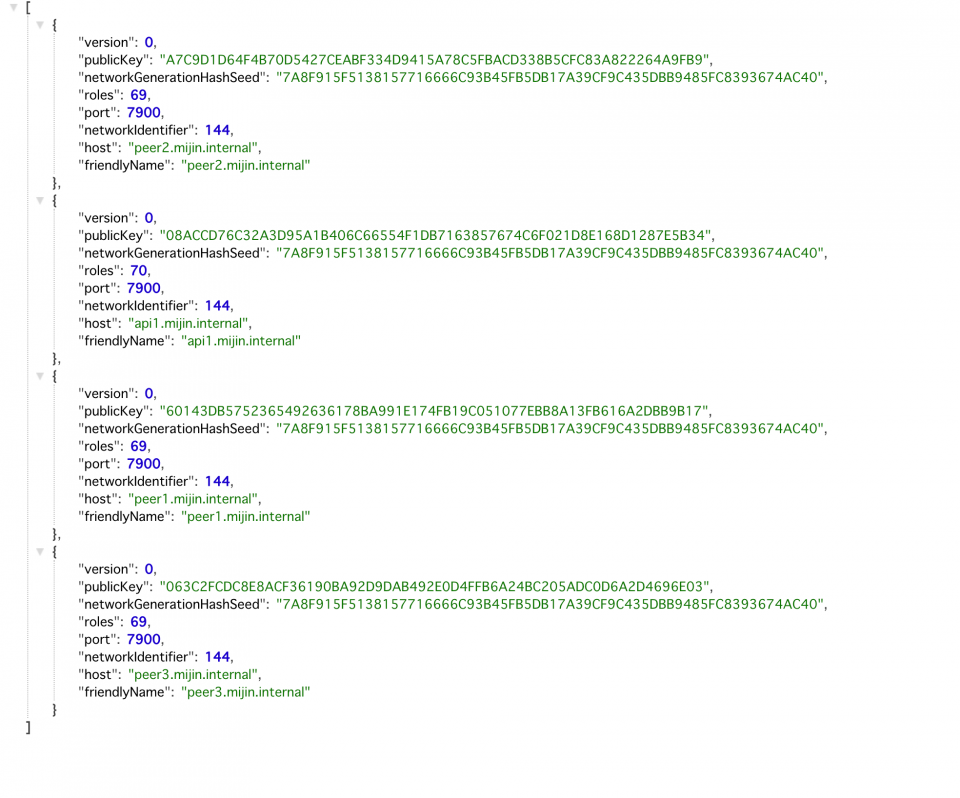
|
You are now ready to use mijin Catapult (v.2) Enterprise Preview Version.
Let's get started using it in the next section!
How to Use mijin Catapult (v.2) Enterprise Preview version
